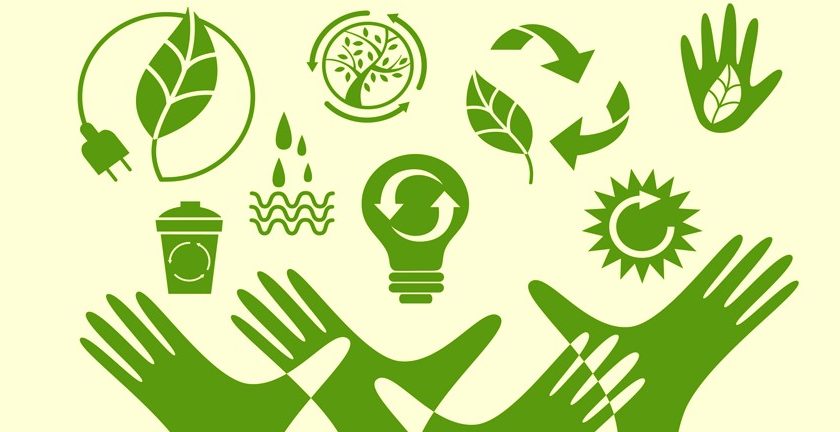Recently, the word “sustainability” has been popping up left and right—especially in advertisements, magazines, and social media. However, many people don’t know what it really means. The UN World Commission on Environment and Development defines sustainability as “development that meets the needs of the present without compromising the ability of future generations to meet their own needs.” How does this term relate to regular, everyday citizens? And how does it relate to schools?
Practicing sustainable habits in schools could not be more significant. Mr. O’Hern, a Germantown Academy Upper School science teacher, shares his thoughts about the importance of sustainability in schools. He claims, “schools are often big institutions that use a lot of resources. I think that schools are places of learning, and schools should have a goal of helping students to learn about sustainability and should have a goal of helping students partner in efforts to think about sustainability. I think schools are fulfilling part of that mission to help young people learn about what it means to act and behave sustainably.” It is important for schools to be sustainable in their use of resources and to educate students about the importance of protecting the environment.
While being fully sustainable as a school is a great goal to work towards, there are many logistical barriers that arise for school administrators. The most prominent obstacle, which Mr. O’Hern brings up, is cost. He explains that “it might be cost-prohibitive to behave in ways that are sustainable.” All of the technology that GA has put in place to work towards sustainability can cost a lot of money, which many schools can’t afford.
In addition, Emily Luo ’22 mentions an internal barrier, which she calls “convenience culture.” Emily explains, “It’s obviously more convenient to just buy a plastic water bottle and ignore where it’s going. Especially in high school when everyone’s so busy, it’s kind of hard to think about things other than your own life. And I guess it’s just the culture of it, where people aren’t super conscious about their decisions.” In order to move forward with sustainable efforts, schools need to overcome logistics including the cost and resources needed to increase sustainability. Schools must take on the responsibility to encourage students to be conscious of their decisions.
Though GA isn’t as sustainable as it should be, there are still positive steps that the school is taking. Mr. O’Hern acknowledges that “GA actually does a pretty good job behind the scenes of doing a number of things sustainably. When [GA] built the new buildings 10 years ago, [the school] invested in some pretty efficient heating and air conditioning systems. The new Middle School, Upper School, and Pavilion are LEED Gold certified, which means they used materials that were manufactured and often harvested close by. For example, the rocks that are on the outside of the buildings.” In addition to this, GA also has motion sensors that manage energy by automatically turning the lights off when nobody is around. GA has definitely made conscious efforts to be sustainable, which will hopefully grow in the future.
Although GA has strived to be more environmentally friendly, there is always room for improvement. Mr. O’hern thinks that “we could do a much better job with something as simple as recycling” and that people don’t “take as much time to think about recycling as they could.” Recycling is a very simple way to help the environment, and consciously engaging in that behavior could make a big difference. Mr. O’Hern also emphasizes the significance of reducing the amount of resources that are being used in the school. He brings up the point that “sustainability really is about not consuming resources, such that those resources aren’t available for the future so trying to consume resources at a lower level.” He recommends that the GA community use less paper. He estimates that the school uses “at least a couple of million sheets of paper a year,” and hopes that solutions like surface pros can at least reduce the amount of paper being used.
Even though the issue of sustainability in schools seems like a huge task that must be dealt with by the school administrators, there is a lot that students can do to be more environmentally friendly at school and at home. At school, students can be more conscious of the number of disposable plastics that they bring for lunch and take care to separate their waste into recycling and trash bins. Emily Luo shares her personal sustainability goal of “try[ing] to eat one vegan or plant-based meal a day because the animal industry really affects global warming a lot with how much carbon dioxide they release.” Overall, students must be aware of their actions and how these actions will affect the environment for future generations.
Sources:

